Five years on, Nikon’s given its Z series baby a boost
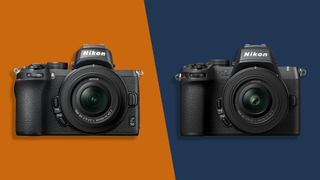
Left: Nikon Z50.Right: Nikon Z50 II
Five years is a long time in the world of cameras. So you might expect to find more novelty on the spec sheet of the Z50 II, an entry-level mirrorless model released in November 2024 – half a decade after the original Z50. Yet a quick comparison reveals that it has the same 20.9MP APS-C sensor, the same mechanical burst speeds and the same ISO range. And like the first-generation model, it also lacks in-body image stabilization.
On first impression, then, the headline numbers don’t do much to justify an upgrade from the Z50. But there’s a lot more to the Z50 II than meets the eye. Dig a little deeper, like we did in ourin-depth review, and you’ll discover that Nikon’s made a number of crucial improvements for the Z50 II.
Some of these changes make the shooting experience better, like the introduction of a vari-angle touchscreen and deeper grip. Others bolster its appeal for videographers, such as support for 10-bit N-log video. And the most significant turbocharges its performance: an Expeed 7 processor equips the Z50 II with flagship subject detection autofocus skills and 30fps electronic burst speeds.
Taken together, these add up to a much more powerful hybrid for beginners. We think the Z50 II is one of the best entry-level mirrorless cameras, at a price that represents fantastic value. There are certainly some compelling reasons to consider upgrading if you already own the Z50. Let’s explore them.
>>>EN-EL25 Battery for Nikon Z50 ZFC
1. Subject detection autofocus
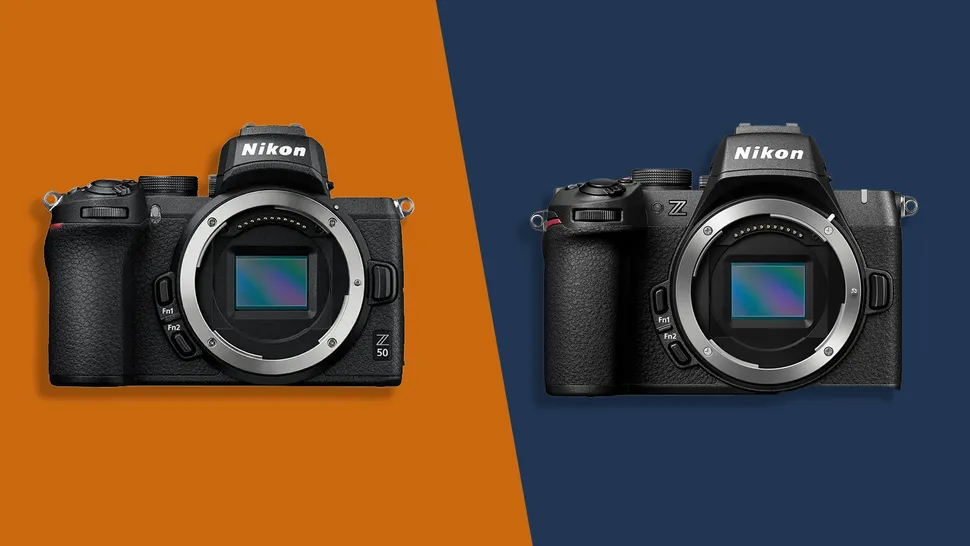
Left: Nikon Z50.Right: Nikon Z50 II
Chief among the upgrades for the Z50 II is its engine: under the hood now lives Nikon’s Expeed 7 processor – the same chip found in the flagshipZ9. Despite being an entry-level model in the Z series line-up, this equips the Z50 II with some serious power. That’s especially true when it comes to autofocus.
Like the Z50, the Z50 II has a 209-point hybrid autofocus system. Thanks to that top-tier chip, though, it benefits from class-leading subject detection skills. While the original Z50 did a solid job of detecting human faces with its Eye AF, the Z50 II is on another level.
It has nine separate modes for different subjects, including people, animals and vehicles. You can also use the automatic mode to recognize and track a number of subjects in a single scene. Based on our review, it delivers the kind of speed and accuracy usually reserved for much pricier full-frame models.
In short, the Z50 II is in a different league to the Z50 when it comes to autofocus performance. If you want a camera that can keep fast-moving subjects in sharp focus, the Z50 II is worth the upgrade.
>>>EN-EL19 Battery for Nikon S6600 S3100 S6600 S7000 S2500 S2600
2. Improved handling
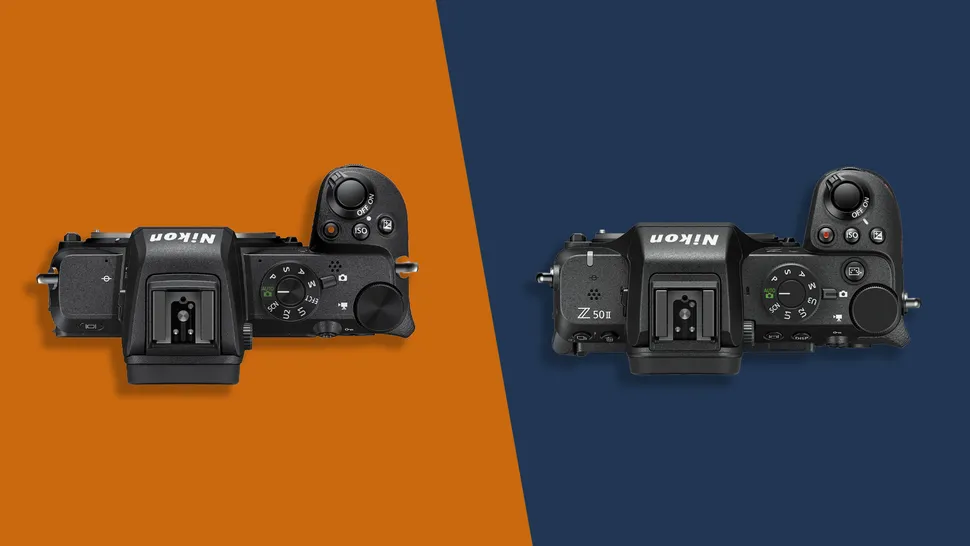
Left: Nikon Z50.Right: Nikon Z50 II
Both the Z50 and the Z50 II are tidily designed mirrorless cameras, with neat proportions which make them easy to travel with. In our review of the original Z50, we praised its control layout and ergonomic grip, while noting that some buttons had been omitted in order to save space.
The Nikon Z50 II is actually marginally larger than the Z50, and heavier by 70g. We think that’s an improvement: it feels reassuringly solid in the hand, yet also more comfortable to hold, thanks to a deeper grip. The refinements are minor but meaningful, making the Z50 II a more enjoyable camera to shoot with.
The same can be said of its control layout, which is closer to those of its full-frame cousins. Several functions which had to be accessed virtually on the Z50 now have dedicated buttons on the Z50 II: you’ll find a zoom button, a display button and a drive button on the back of the camera.
There’s also a new Picture Controls button on the top plate, which gives easy access to Nikon’s customizable library of color presets. More than a fad, it’s a creative addition for beginners, which can also be reprogrammed to serve as a function button. For enthusiasts who value a tactile interface with plenty of direct-access controls, the Z50 II offers more flexibility to grow.
>>>EN-EL22 Battery for Nikon 1 J4/S2
3. Powerful video specs
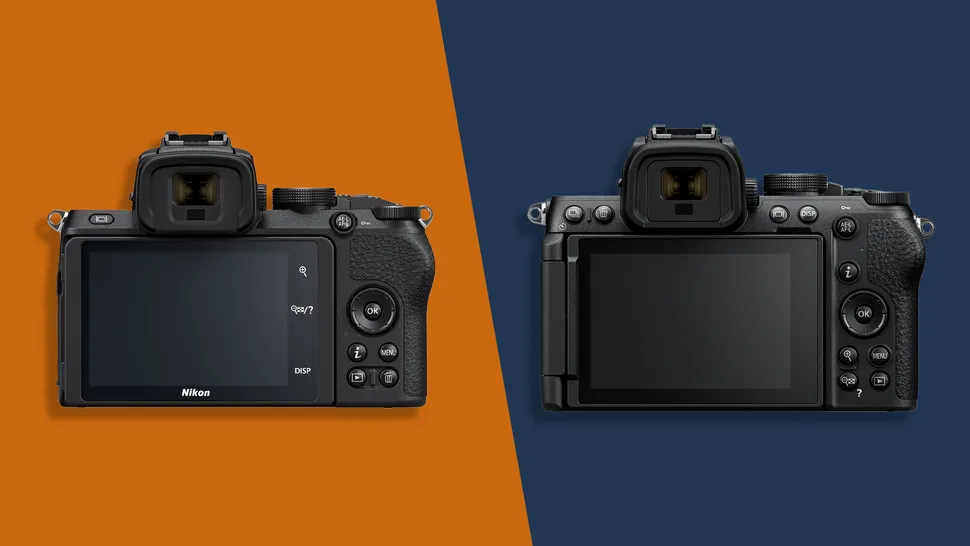
Left: Nikon Z50.Right: Nikon Z50 II
The Z50 was a capable entry-level stills camera that could also shoot decent4K/30p footage. That changes with the Z50 II, which boasts the recording chops of a proper hybrid. It can shoot 4K/60p video, albeit with a 1.5x crop, while uncropped 4K footage is captured at 30fps, oversampled from 5.6K.
The upgrades go beyond frame rates. The Z50 II is Nikon’s first APS-C camera to support 10-bit N-log video, including the option to use RED Luts color profiles – fruit of Nikon’s acquisition of pro cinema camera maker, RED Digital Cameras, in 2024. This unlocks a huge amount of flexibility when it comes to color grading, making the Z50 II a much more versatile tool for aspiring filmmakers.
There’s also a new Product Review mode, which makes it easy for novice influencers to create content where the focus shifts smoothly from presenter to product. Together with the move to a vari-angle touchscreen, plus the addition of a headphone port for real-time audio monitoring, the Z50 II is more powerful recording tool across the board.
If you already own the Z50 and you only shoot casual video, there’s no reason to upgrade. But if you’ve found yourself exploring videography alongside your stills photography, the Z50 II offers a whole lot more.
4. Upgraded displays
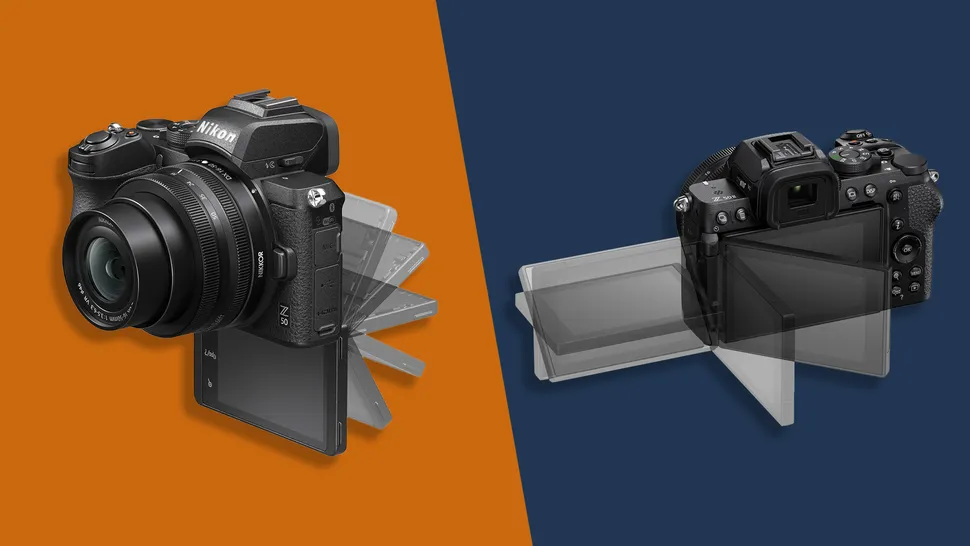
Left: The Nikon Z50’s flip screen.Right: The Nikon Z50 II’s vari-angle screen.
The sensor isn’t the only thing with the same resolution across two generations of the Z50: the rear touchscreen is still a 1.04m-dot display, while theOLEDviewfinder remains a 0.39-inch, 2.36m-dot number. But those figures tell only half the story.
The EVF on the Z50 II is twice as bright, with up to 1000 nits peak brightness. In practise, that means your eyes have to do less work when adjusting from bright ambient conditions to the display inside the viewfinder. A small but noticeable improvement.
More significant are the changes to the rear display. It’s slightly bigger than the panel on the Z50 (3.2 inches plays 3 inches) and the interface helpfully rotates when you’re shooting in portrait orientation. Crucially, Nikon has also ditched the flip-down design of the Z50’s display in favor of a fully articulating setup.
Where the tilting screen of the original would be obstructed by a tripod, the vari-angle display of the Z50 II offers full flexibility for framing from the front, side and even underneath. If you regularly shoot on the move or record video with your camera mounted to a tripod, this change will make a significant difference.
5. Faster shooting
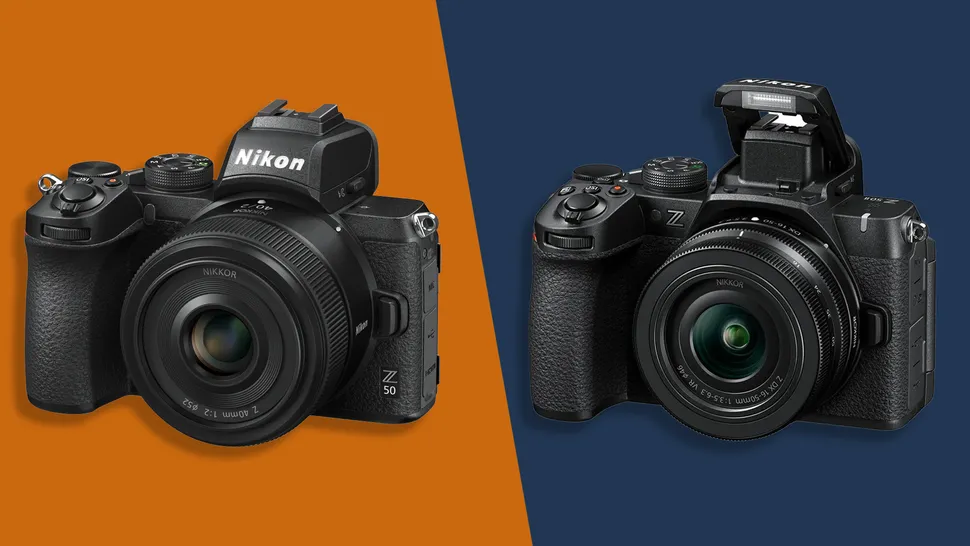
Left: Nikon Z50.Right: Nikon Z50 II
Burst speeds won’t be a dealbreaker for every photographer, but if action is one of the genres you like to cover, the Z50 II easily wins that race. Burst speeds with the mechanical shutter max out at the same rate as the Z50: 11fps. But thanks to that Expeed 7 processor, it has a secret weapon.
A new High-Speed Frame Capture+ mode allows the Z50 II to shoot stills at up to 30fps with the electronic shutter. In our tests, we did encounter some rolling shutter in this mode. Nevertheless, it leaves the Z50 in the dust when it comes to firing off continuous bursts.
The Z50 II is faster in other ways, too. Where the Z50’s performance is fettered by its UHS-I SD card slot, the Z50 II benefits from support for UHS-II cards, meaning faster read and write speeds. Its wired interface has also been upgraded from micro USB to USB-C, which means 5Gbit/s transfer rates.
Taken altogether, these enhancements make the Z50 II an altogether speedier camera to shoot and work with. The Z50 was no slouch, but if you’ll regularly push it to its limits, the Z50 II is the faster horse.
Closing thought: Do you need II?
If you’re choosing between the Z50 and the Z50 II, the answer is clear: the latter is more powerful, more enjoyable to shoot with and more versatile for recording video. It’s a fantastic entry-level mirrorless hybrid for beginners and one that represents excellent value.
The argument for upgrading is less black and white if you already own a Z50. Whether the improvements warrant a switch will depend on what and how you like to shoot. If you’re mainly into landscapes, for example, there’s not really a compelling reason to upgrade. The Z50 II handles noise slightly better, but it fundamentally captures stills with the same sensor.
On the other hand, if you’re into action or wildlife photography, the enhancements delivered by the Expeed 7 processor are significant. Subject detection autofocus is right up there with the top models in Nikon’s Z series range, making the Z50 II a genuinely capable choice for tracking and shooting fast-moving subjects.
Equally, if you feel held back by the video capabilities of the Z50, the Z50 II has the specs to satisfy a keen learner. It’s every bit a genuine hybrid, with a range of features for filmmaking. Whether you want to monitor audio in real time or try your hand at color grading, the Z50 II will let you do it.
Other refinements, such as new buttons and a vari-angle touchscreen, don’t justify an upgrade on their own. But taken as a package of improvements, the Z50 II is every bit the better camera. If you like what the Z50 offers but want something that’s faster and more versatile, there’s a strong case for switching.